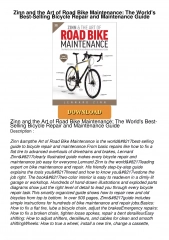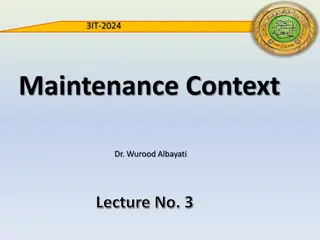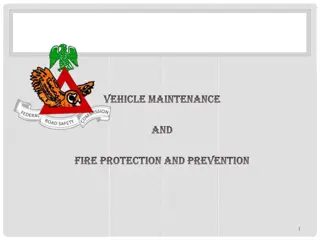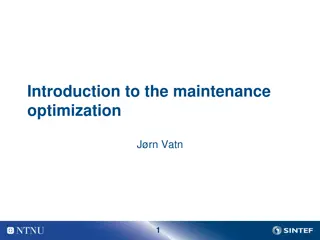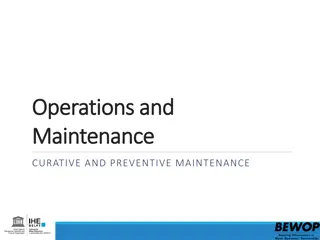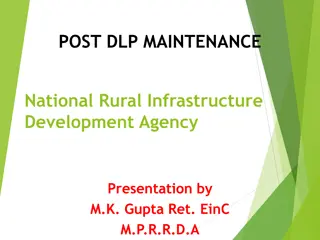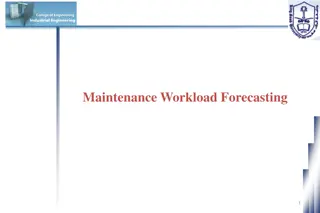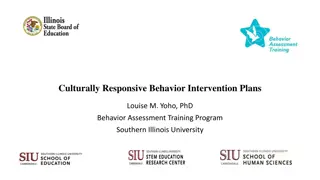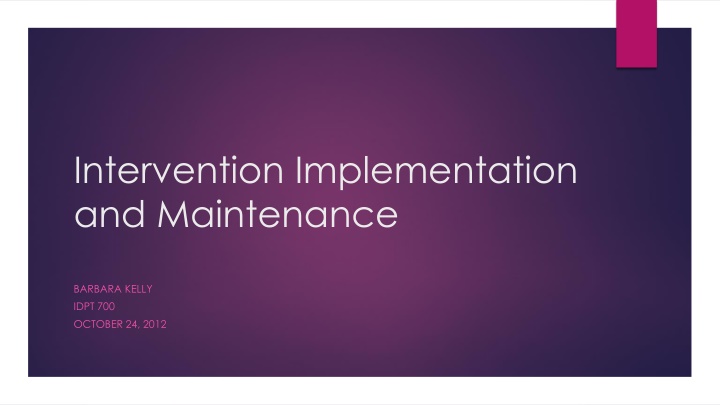
Comparison of Intervention Models for Organizational Improvement
Explore the similarities and uniqueness of Dormant-Cross-Functional Model, Hale-Sustainability Model, and Moseley & Hastings-Four-Stage Process Model in implementing organizational interventions. Which model stands out as the most comprehensive for enhancing performance and managing change effectively? Dive into the details to find out.
Download Presentation

Please find below an Image/Link to download the presentation.
The content on the website is provided AS IS for your information and personal use only. It may not be sold, licensed, or shared on other websites without obtaining consent from the author. If you encounter any issues during the download, it is possible that the publisher has removed the file from their server.
You are allowed to download the files provided on this website for personal or commercial use, subject to the condition that they are used lawfully. All files are the property of their respective owners.
The content on the website is provided AS IS for your information and personal use only. It may not be sold, licensed, or shared on other websites without obtaining consent from the author.
E N D
Presentation Transcript
Intervention Implementation and Maintenance BARBARA KELLY IDPT 700 OCTOBER 24, 2012
Overview Dormant Dormant-Cross-Functional Model Hale-Sustainability Model Hale Moseley and Hastings-Four-Stage Process Model Moseley & Hastings
DORMANT-CROSS-FUNCTIONAL MODEL, HALE- SUSTAINABILITY MODEL, AND MOSELEY AND HASTINGS-FOUR-STAGE PROCESS MODEL SIMILARITIES Dormant-Cross-Functional Model Focus on structure Focus on timing and organization Increases communication between users and stakeholders Hale-Sustainability Model Focus on structure Focus on measurement Allows for active measurement Moseley and Hastings-Four-Stage Process Model Focus on structure Four stage process Focus on timing and organization Focus on communication
DORMANT-CROSS-FUNCTIONAL MODEL UNIQUENESS Heavy focus on resistance How to overcome and manage How to minimize resistance Focus on change readiness Keeping associates informed of status
HALE-SUSTAINABILITY MODEL UNIQUENESS Four areas of implementation Governance Deciding who leaders will be Attention Engaging management on updates-keeping information current and in manager s focus Measurement Status What is improving and what isn t Self-regulation Proper tools, procedures, and changes for associates Active monitoring Focus on sustaining the implementation Allows for growth and creditability
MOSELEY AND HASTINGS- FOUR-STAGE PROCESS MODEL UNIQUENESS Four-Stage Process Model Performance Analysis of Need or Opportunity Intervention Selection, Design, & Development Organizational Analysis Environmental Analysis Desired Performance Gap Analysis Actual Performance Intervention Implementation & Maintenance Interventions Business Case Evaluation Techniques Formative Summative Confirmative Meta Evaluation/Validation
WHICH MODEL IS MOST COMPREHENSIVE? Moseley and Hasting s Four-Stage Process Model Many steps to follow In-depth steps and criteria for each stage As stated in the textbook this model focuses on resources, strategic goals, competencies, and collective learning (Van Tiem, Moseley, Dessinger. P. 476). Research in both organizational aspects and environmental aspects Ends with a evaluation step
WHICH MODEL IS MOST APPROPRIATE FOR HIGH PERFORMANCE TIRE COMPANY? HPT is Mosely and Hasting s Four-Stage Process Model Organizational and environmental aspects of the business are crucial Identification of actual and desired performance is crucial Identification of true gaps to ensure high turnover, low production, and low morale are corrected Identification of proper interventions that can be implemented and maintained at the organization
References Van Tiem, Dalene M., Moseley, James L., Dessinger, Joan C. Fundamentals of performance improvement. San Francisco, CA: John Wiley & Sons, Inc.

